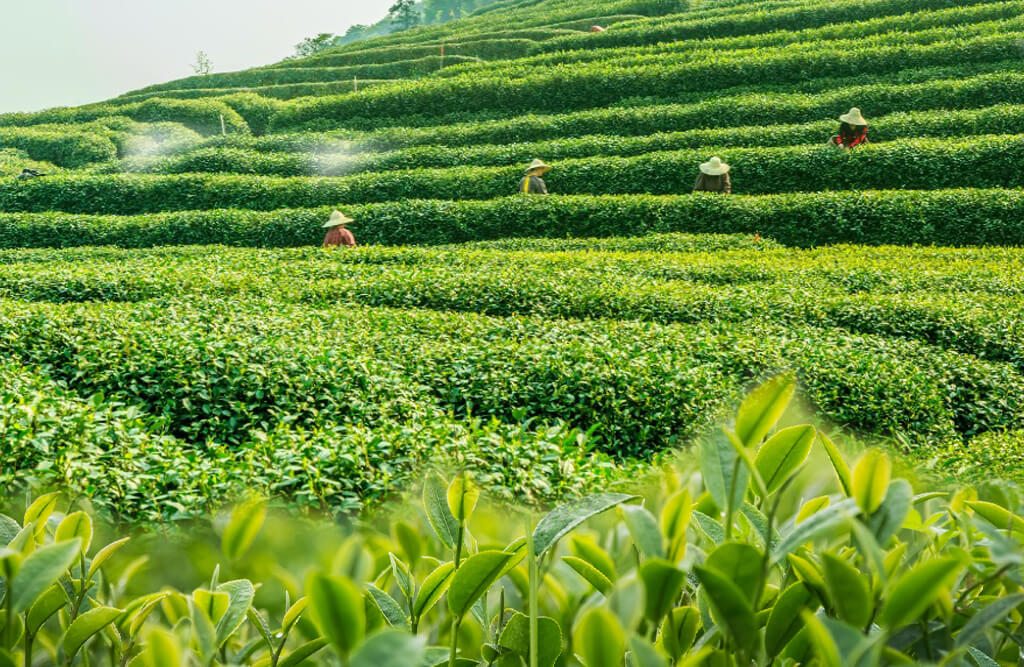
Tea is one of the oldest and most popular beverages in the world. Globally, India holds the second position in tea production. Approximately 52% of the country's tea production and around 13% of the world's tea production occur here. According to official figures, there are nearly 800 organized tea gardens in this state, collectively producing 630-700 million kilograms of tea. Tea is a robust plant, thriving at elevations above 6000 feet from the average sea level, where the soil is well-suited with good rainfall and proper drainage. Tea bushes are propagated through seeds and cuttings. Within three years, the plant is ready for harvesting. The young bushes exhibit vigorous sprouting, providing new tender leaves that bring a change in the quality of tea. After plucking the green tea leaves in tea gardens, they are processed in tea factories.
Tea cultivation takes place in 15 states in India, with Assam, West Bengal, Tamil Nadu, and Kerala being the major tea-producing states. Tea is cultivated in more than 36 countries worldwide. The primary tea-producing countries are China, India, Kenya, and Sri Lanka, contributing to 81% of the world's total tea production and exports. Due to India's large population, the country accounts for 19.5% of global tea consumption. Its significance in the national economy is crucial as it contributes significantly to foreign exchange earnings. Moreover, it stands as the second-largest employment generator, providing jobs to approximately 1.2 million people. The tea plantation industry also supports over 3 million dependents in tea garden labor.
Selecting high-quality varieties of plants and proper maintenance are crucial for tea cultivation to prevent diseases. Adequate drainage is necessary for this, along with a suitable acidic soil with a pH level between 5 and 6. Tea plants thrive in warm climates, and they require light acidic soil. The ideal temperature range for tea plant growth is between a minimum of 15 degrees Celsius and a maximum of 45 degrees Celsius.
Irrigation plays a vital role in achieving advanced tea production. Regular and proper irrigation contributes to the correct development of plants, leading to increased productivity. Utilizing advanced irrigation systems helps in retaining moisture in the soil, along with air filtration and aeration. This ensures the optimal development of tea plants, inspiring them towards high productivity. If rainfall is insufficient, irrigation can be carried out through the drip method.
White Peony: This variety produces delicate leaves through buds, resulting in a mild astringency in the tea. The color lightens when steeped in water. White Peony is predominantly grown in China.
Assam Variety: Regarded as the finest globally, this tea variety has shiny and tender leaves. The plants of this variety can also be used for replanting.
Costs and Benefits of Tea Production: India has the highest production costs among the world's major tea-producing countries. The production cost involves labor and other expenses associated with tea gardens. Tea is a crucial and profitable crop in India, providing employment and livelihood to millions of people. Improving the yield of tea leaves is essential for enhancing the overall quality of tea production. Cultivating advanced tea varieties can yield between 700 to 800 kilograms per hectare. The market value of tea is generally high, allowing farmers to easily earn a substantial income ranging from one and a half to two lakhs from a year's tea crop.
Mechanization for Tea Production: Mechanization in various sectors of green tea leaf production in India, such as plucking, application of soil pesticides, pruning of tea leaves, and sorting, can not only reduce the cost of green tea leaf production but also alleviate the challenges arising due to the shortage of labor during busy seasons in farming. Mechanization for tea leaves is also an extremely crucial aspect. Using high-quality machinery can make the work in different phases simple, fast, and efficient. With advanced technology and improved production systems, enhancing the tea industry can lead to better outcomes for farmers, ensuring sustainability for both the crop and the Indian tea industry.
Read More Advances in Technology and the Future of India Agricultural Economy